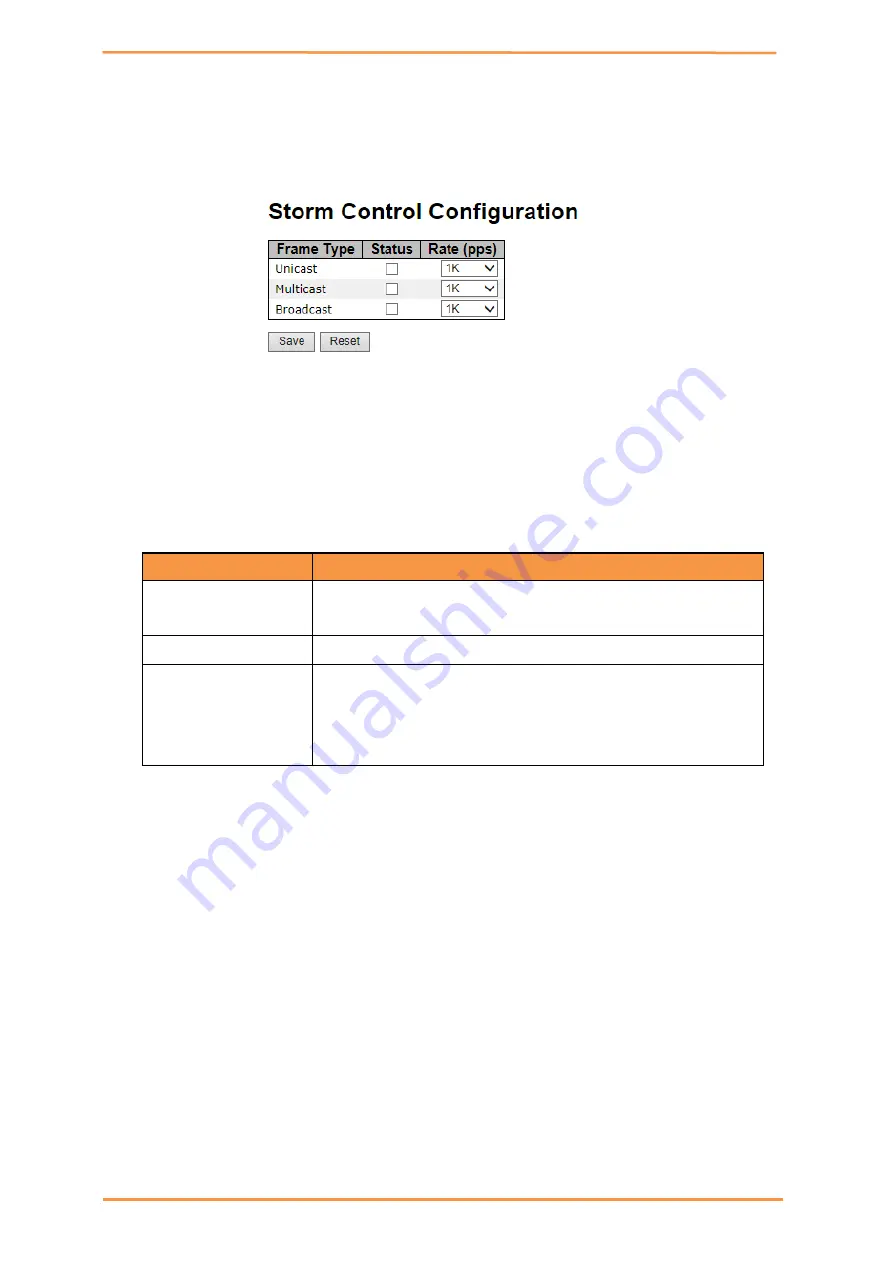
iES24G Series User’s Manual
iS5 Communications Inc.
62
4.1.8
Traffic Prioritization
4.1.8.1
Storm Control
Storm control for the switch is configured on this page.
There is a unicast storm rate control, multicast storm rate control, and a broadcast storm rate control. These only
affect flooded frames, i.e. frames with a (VLAN ID, DMAC) pair not present on the MAC Address table.
The rate is 2^n, where n is equal to or less than 15, or "No Limit". The unit of the rate can be either pps (packets
per second) or kpps (kilopackets per second). The configuration indicates the permitted packet rate for unicast,
multicast, or broadcast traffic across the switch.
(Note: Frames, which are sent to the CPU of the switch are always limited to approximately 4 kpps. For example,
broadcasts in the management VLAN are limited to this rate. The management VLAN is configured on the IP setup
page.
Label
Description
Frame
Type
The settings in a particular row apply to the frame type listed here:
unicast, multicast, or broadcast.
Status
Enable or disable the storm control status for the given frame type.
Rate
The rate unit is packet per second (pps), configure the rate as 1, 2, 4, 8,
16, 32, 64, 128, 256, 512, 1K, 2K, 4K, 8K, 16K, 32K, 64K, 128K,
256K, 512K, or 1024K.
The 1 kpps is actually 1002.1 pps.
4.1.8.2
Port QoS Configuration
This page allows you to configure QoS settings for each port.
Frames can be classified by 4 different QoS classes: Low, Normal, Medium, and High.
The classification is controlled by a QCL that is assigned to each port. A QCL consists of an ordered list of up to 12
QCEs. Each QCE can be used to classify certain frames to a specific QoS class.
This classification can be based on parameters such as VLAN ID, UDP/TCP port, IPv4/IPv6 DSCP or Tag Priority.
Frames not matching any of the QCEs are classified to the default QoS class for the port.
















































